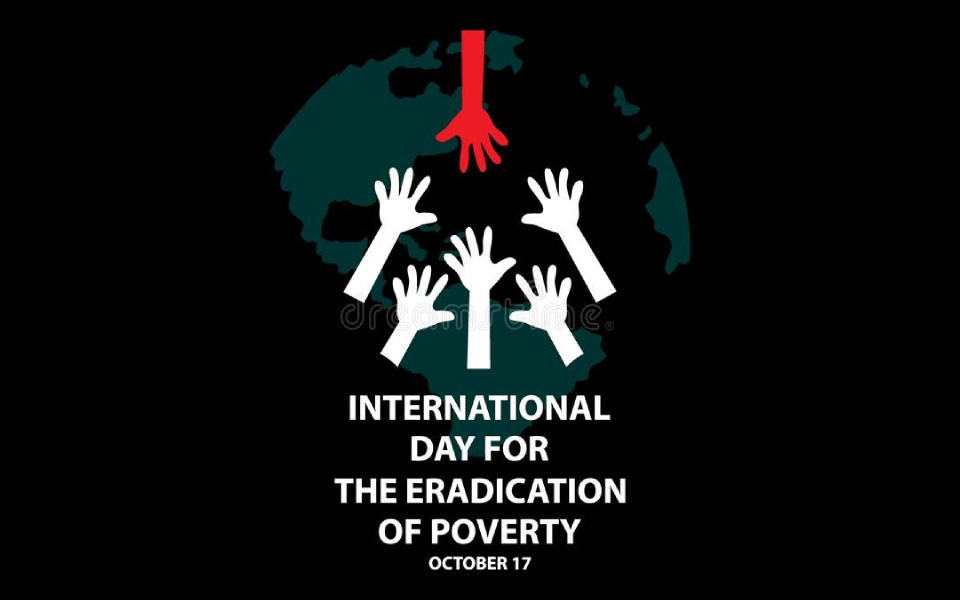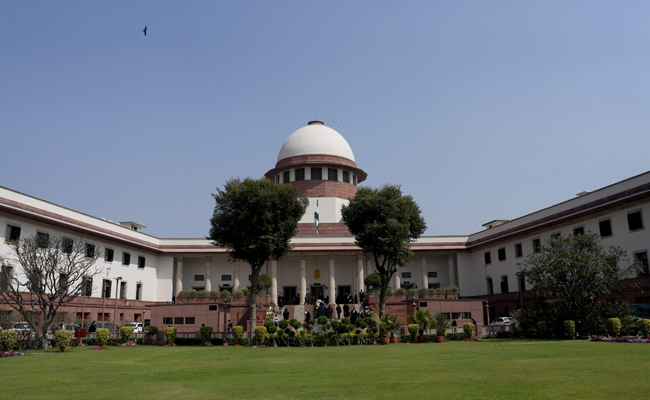October 17 brings world attention to the fight against poverty and the pursuit of dignity for all humankind. Observed as the International Day for the Eradication of Poverty, this day has also become an annual reminder to world governments about one of the greatest challenges confronting humanity in the 21st century. Millions continue to suffer through it across continents. Its focus is really on collective action towards sustainable development with a probable agenda to make sure that no one is left behind.
This day comes from Father Joseph Wresinski, a French priest who established the ATD Fourth World Movement in 1957 in the battle against extreme poverty.. On October 17, 1987, over 100,000 people held a rally at the Trocadéro in Paris to commemorate victims of hunger, poverty, and violence. A commemorative stone at the site bears an inscription that says, "Wherever men and women are condemned to live in extreme poverty, human rights are violated. To come together to ensure that these rights be respected is our solemn duty." The event came to be the cornerstone of international recognition, and in 1992, the United Nations declared October 17 as the International Day for the Eradication of Poverty.
This day offers a moment to confront the harsh realities of poverty, advocate for human dignity and rights, and champion efforts to restore both. It also highlights the deep-rooted economic, social, and cultural inequalities that fuel the persistence of poverty. Reflecting the global struggle, economic trends have shown significant fluctuations, as reported by the World Bank. In 2019, 8.4% of the global population—approximately 650 million people—survived on less than $2.15 a day. However, the COVID-19 pandemic wiped away all this within a year, adding 97 million people to extreme poverty in 2020. Poverty rates have just began to rebound since then, while the effects of inflation, conflict, and climate change continued to hinder meaningful recovery and growth by 2023.
According to the World Bank and inputs from NITI Ayog poverty in India, 24.82 crore Indians escaped multidimensional poverty over the past nine years. The Poverty Headcount Ratio saw a steep decline, dropping from 29.17% in 2013-14 to 11.28% in 2022-23, reflecting significant progress. For all the 12 indicators of the MPI, major improvements were recorded; hence much was enhanced upon-completely in the direction of which poverty reduction efforts were undertaken.
This decline has been recorded in the largest states, namely, Uttar Pradesh, Bihar, and Madhya Pradesh. Interestingly, the faster gains on poverty reduction within the poorer states indicate that regional disparities are shrinking on a positive scale.
However, fueled by the pandemic, socio-political conflicts and exploding unemployment affect millions, particularly the vulnerable population from rural and under-developed countries . UN SDG 1 states that extreme poverty is to be completely eradicated by 2030. Based on current projections and unless action is taken in due time, the world will probably miss this target. Economic uncertainty, war, and climatic change are all strong threats to this progress, and never has the call for sustained, inclusive effort been higher. Committed governments, communities, and individuals working together towards equality, dignity, and opportunity for all will bring this world of poverty free. It reminds us on this day that collective action is a prerequisite for creating a future where no one will be left behind.
Let the Truth be known. If you read VB and like VB, please be a VB Supporter and Help us deliver the Truth to one and all.
New Delhi (PTI): A prominent member of India's shooting coaching staff, Ankush Bhardwaj, has been suspended by the national federation after a minor shooter accused him of sexually assaulting her during the National Championships last month.
NRAI (National Rifles Association of India) confirmed that an FIR has been filed against Bhardwaj in Faridabad. Bhardwaj, a resident of Mohali, has been booked under Section 6 of POCSO Act (aggravated sexual assault), and Section 351(2) of the Bhartiya Nyaya Sanhita (criminal intimidation).
"NRAI has suspended him and we will issue a show-cause notice," NRAI secretary Rajiv Bhatia told PTI.
ALSO READ: SC defers hearing to Jan 13 on pleas challenging EC’s special intensive revision of electoral rolls
"He has been suspended on moral grounds. Now, he has to prove himself innocent. Till the inquiry is not completed, he will not be associated with any coaching activity," he added.
Bhatia said NRAI had recommended Bhardwaj for a place in the 37-strong coaching team after the Paris Olympics in 2024.
"It was on the recommendation of the NRAI that he was appointed by SAI as one of the coaches. It is a case of sexual harassment which happened in Surajkund," said Bhatia.
According to the FIR filed by the victim, she was targetted last month during the National Championships at the Karni Singh Range.
The girl, who has been training with Bhardwaj since August last year, stated that she was left traumatised by the incident and spoke up in front of her mother on January 1 after being persistently probed.
In her FIR, the 17-year-old has alleged that Bhardwaj used to call her for training at venues such as Mohali, Patiala, Dehradun and Delhi but she would always return home the same day.
However, on the day of the incident, the victim said she went to the Karni Singh Range unaccompanied in a taxi to compete in the Nationals.
The girl said that when she was about to leave for home after finishing her competition, the coach asked her to stay back to analyse her performance.
She stated in her complaint that the coach first requested her to meet him at the lobby of a hotel in Surajkund area of Faridabad. However, upon her arrival, he allegedly coerced her into coming up to his room, claiming a more focused discussion was required.
"The coach asked me to come to the elevator area. After that, when I went to the elevator area, coach sir told me that he had booked a room here, so come to my room. I will discuss the match with you there.
"He took me to a room on the third floor, and discussed the match. After sometime, I said to sir that I wanted to go home, but he told me that he would crack my back," she said, referring to a physiotherapy technique of post-competition recovery.
"I immediately refused. Then sir forcibly made me lie face down and sexually assaulted me and when I opposed, he threatened me," the victim stated in the FIR.
"He threatened me not to disclose the incident or else he would sabotage my professional career. I got really scared after the incident and did not tell anyone," she stated, adding that she eventually told her mother after she repeatedly asked her on noticing change in her demeanour following the incident.
A senior police officer said that a probe is underway.
Bhardwaj, a former pistol shooter, had served a doping ban in 2010 for the use of a beta-blocker during his competitive days. Beta-blockers are banned for athletes engaged in disciplines like shooting, archery and billiards as they help reduce heart rate, muscle tremors, and anxiety.





